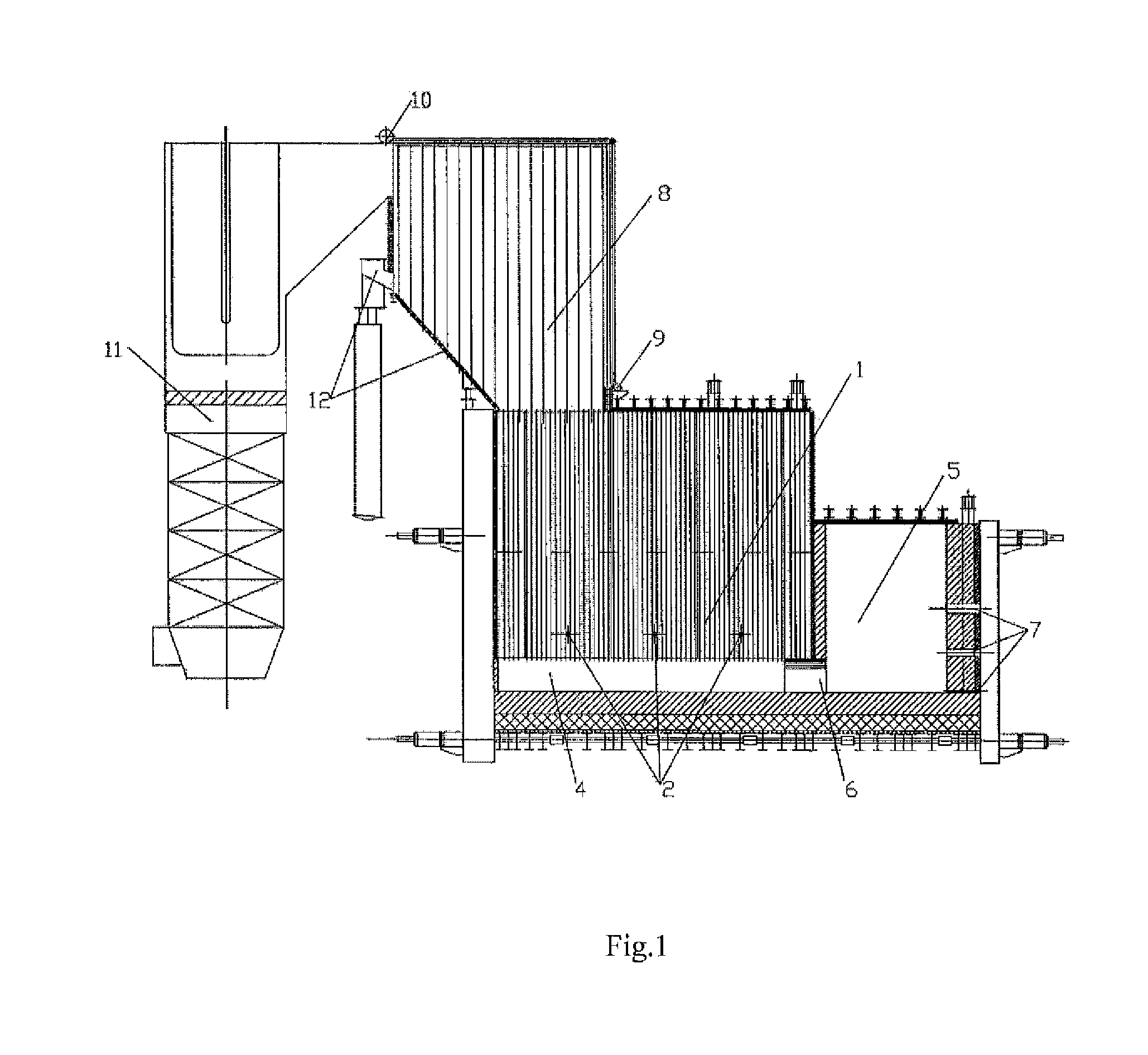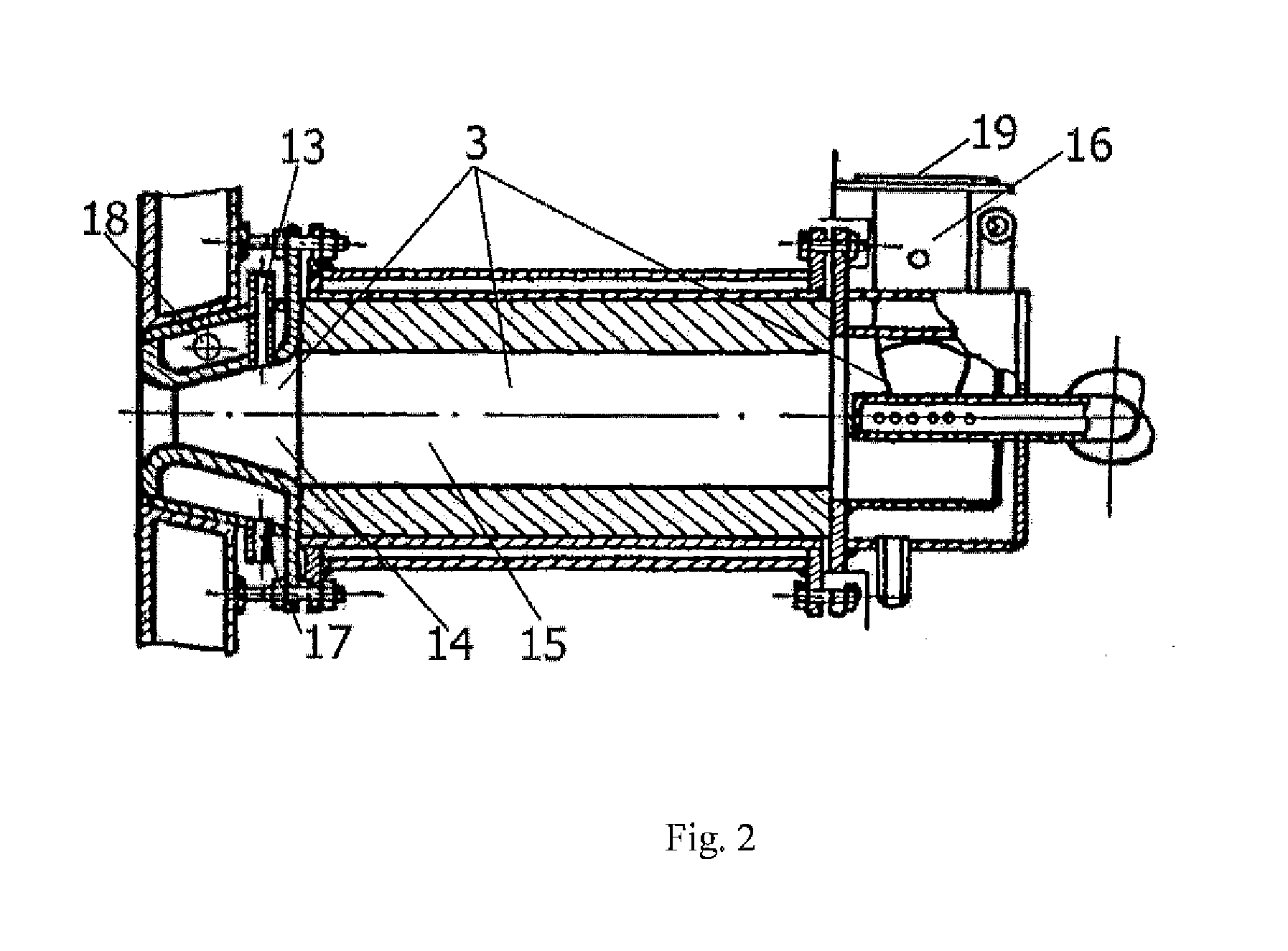Glass melting method and molten glass layer bubbling glass melting furnace
a glass melting furnace and glass melting technology, applied in the combustion process, charging furnace, lighting and heating equipment, etc., can solve the problems of fuel overconsumption and inability to control fuel combustion, and achieve the effect of minimizing working volume and high bulk heat load
- Summary
- Abstract
- Description
- Claims
- Application Information
AI Technical Summary
Benefits of technology
Problems solved by technology
Method used
Image
Examples
Embodiment Construction
[0032]The method of glass melting using the molten glass layer bubbling glass melting furnace is as follows.
[0033]The glass melting process can be divided into five stages: silicate formation, glass formation, homogenizing, degassing and cooling.
[0034]The silicate formation stage comprises melting of the fusible charge components and the completion of all the chemical reactions in the primary melt. at the end of this stage all the main oxides contained in the charge are bound with silica in the form of silicates. Silicate formation rate can be increased by earlier generation of the liquid phase in the charge. This is favored by increasing the charge / molten glass phase boundary area, high heat concentration in the unit volume of the media surrounding the melting charge, increasing the charge temperature in the melting zone (increasing charge temperature by 100-150° C. accelerates silicate formation twofold) and intensifying the mixing of the melting charge with its surrounding media....
PUM
| Property | Measurement | Unit |
|---|---|---|
| temperature | aaaaa | aaaaa |
| temperature | aaaaa | aaaaa |
| temperature | aaaaa | aaaaa |
Abstract
Description
Claims
Application Information
 Login to View More
Login to View More - R&D
- Intellectual Property
- Life Sciences
- Materials
- Tech Scout
- Unparalleled Data Quality
- Higher Quality Content
- 60% Fewer Hallucinations
Browse by: Latest US Patents, China's latest patents, Technical Efficacy Thesaurus, Application Domain, Technology Topic, Popular Technical Reports.
© 2025 PatSnap. All rights reserved.Legal|Privacy policy|Modern Slavery Act Transparency Statement|Sitemap|About US| Contact US: help@patsnap.com



